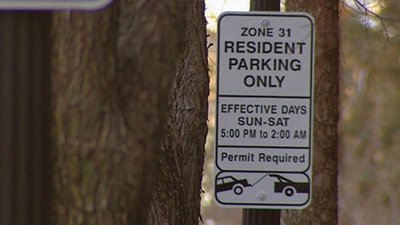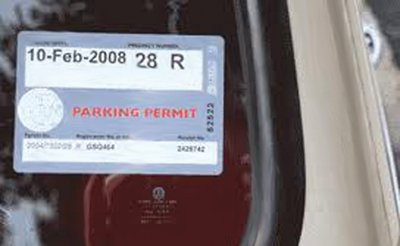Implementing the scheme
 As with most such ideas, the details of implementation are critical and can make a huge impact on whether the idea is accepted by the local residents. Some of the elements that must be given due attention are:
As with most such ideas, the details of implementation are critical and can make a huge impact on whether the idea is accepted by the local residents. Some of the elements that must be given due attention are:
Street Zoning ? deciding the street zones is very important and must be based on the total tenements in an area. Zones typically span a single street but can also include two or even more streets. The zones must be large enough to allow a good use of shared parking, but not so large that residents do not find a spot within a reasonable distance.
Restricted Timings ? Another aspect that has to be decided is the time for which the parking is reserved for local permit holding residents. This will be determined by the typical ?office hours?, that is when residents are not likely to use the parking.
Permits
 Permit Issue ? Issuing too many permits even for local residents will create competition between them, thus defeating the very purpose of the scheme in the first place.
Permit Issue ? Issuing too many permits even for local residents will create competition between them, thus defeating the very purpose of the scheme in the first place.
The number of permits that can be issued would depend on the total availability of street spots compared to the households in the area. Permits should be issued against proof of residence, such as a property tax bill and records of permits issued should be computerised.
Design of Permits ? Permits should be designed such that the expiry and zones are clearly visible and attempting to make fake permits are easily caught. Many standard designs exist, which can be suitably adapted for Indian conditions.
Pricing ? Permits should be priced in a manner that represents the true value of the street. Since street parking reduces the need for greater in-building parking, residents already save in that regard.
An individual with several cars will no longer be able to hijack all the parking in the neighbourhood, since typically, each property will be given only a fixed (usually one or two) residential parking permits
Visitor Permits ? One has to make some provision for visitor parking, although this would be somewhat limited. Residents may be able to buy a certain number of single use permits, which can be given to guests, or certain streets can be designated as ?open zones?, where anyone can park, even during otherwise restricted timings.
Enforcement ? When non-permit holders park in ?zones? reserved for local residents, such vehicles have to be immediately towed. An enforcement mechanism should be in place.
 Management ? A Residential Parking Permit scheme entails moving from chaotic and unmanaged street parking to a regulated and managed system and hence requires a robust management system. In addition to managing permits and enforcement, it is also necessary to ensure that the ?zoning signs? are always properly maintained. As the area develops it may become necessary to make adjustments and changes to the system. Records must be well maintained and public audits should be built in. A system which is transparent will be trusted by public ensuring their buy-in. Information about the scheme must be available to local residents, including a helpline in case of any issues that they face. The best way to implement the scheme in the end may be to involve the local Mohalla Committes/RWA or equivalent local citizens? forum, along with the local elected representative and a professional agency. It may seem like a new and perhaps daunting idea, but the need for such systems that allow better regulation of local area parking has become the need of the hour.
Management ? A Residential Parking Permit scheme entails moving from chaotic and unmanaged street parking to a regulated and managed system and hence requires a robust management system. In addition to managing permits and enforcement, it is also necessary to ensure that the ?zoning signs? are always properly maintained. As the area develops it may become necessary to make adjustments and changes to the system. Records must be well maintained and public audits should be built in. A system which is transparent will be trusted by public ensuring their buy-in. Information about the scheme must be available to local residents, including a helpline in case of any issues that they face. The best way to implement the scheme in the end may be to involve the local Mohalla Committes/RWA or equivalent local citizens? forum, along with the local elected representative and a professional agency. It may seem like a new and perhaps daunting idea, but the need for such systems that allow better regulation of local area parking has become the need of the hour.
 TrafficInfraTech Magazine Linking People Places & Progress
TrafficInfraTech Magazine Linking People Places & Progress